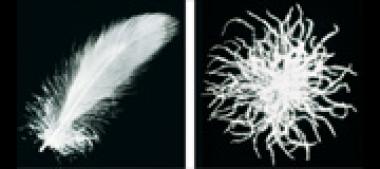What blends of down and feathers are most suitable?
Especially, a duvet containing 100 % of down keeps the sleeper pleasantly warm and cosy with very little weight at the same time. Another favoured blend consists of 90 % down and 10 % feathers.
Further information at :

















